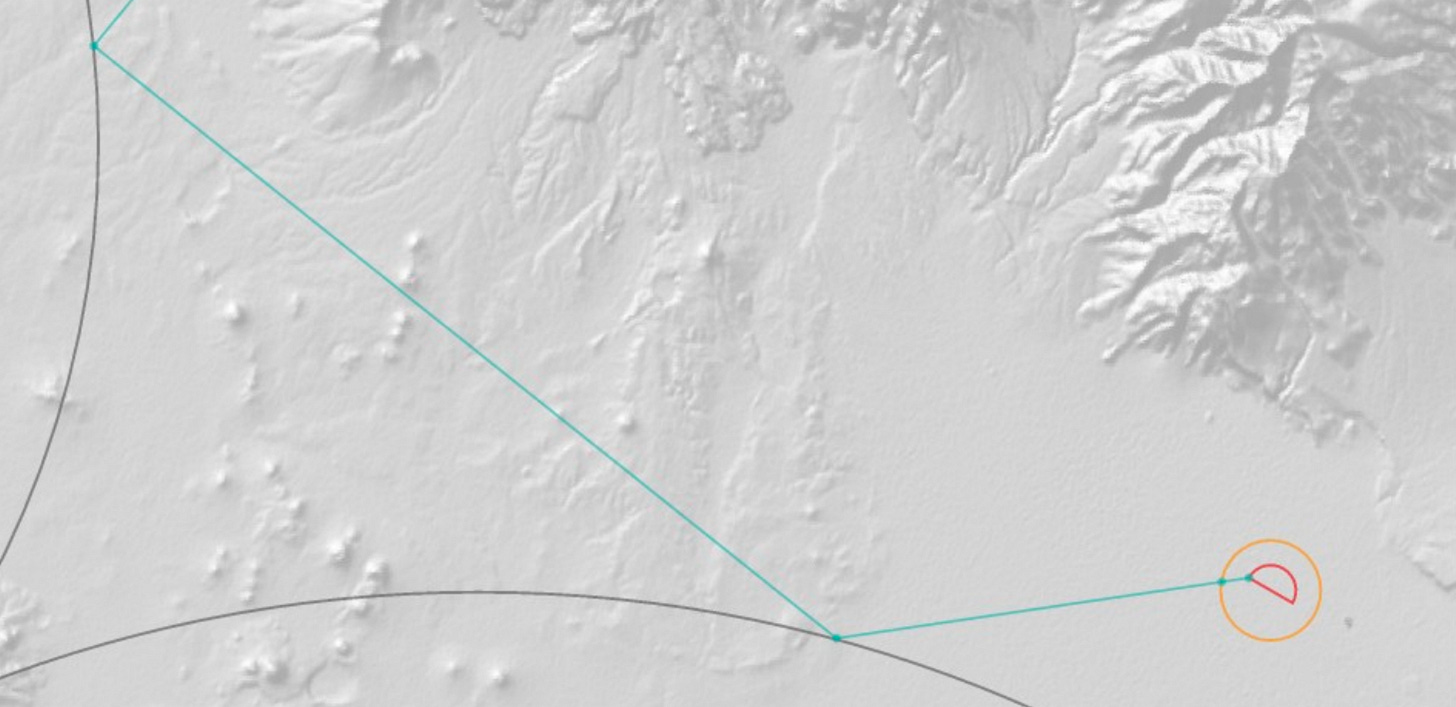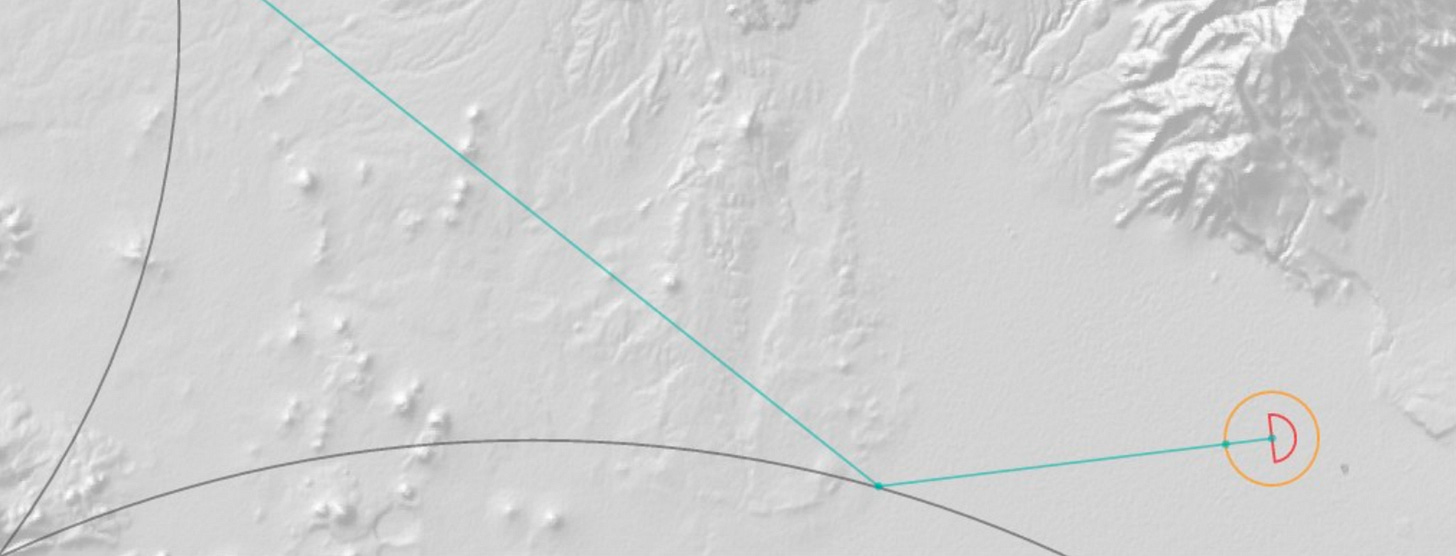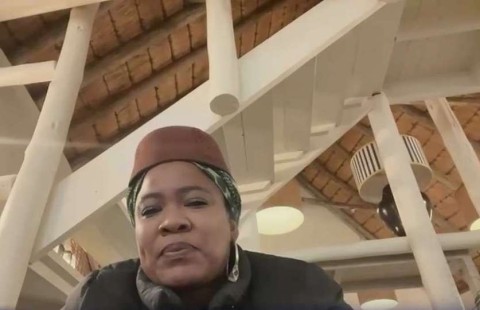Paragliding changes in 2025 (Equalizers, CHS harnesses, H&F World Championship)
I was recently voted to be the Delegate for Hungary, making this meeting my first. Several people told me this was a particularly efficient meeting, and many things were accomplished.
I'd like to summarize the most important changes that were accepted.
The biggest change in the last 20 years of paragliding is the arrival of equalizers! This has the chance of finally solving the weight inequalities in our sport!
The basic idea is that pilots flying bigger sizes have to put foam tubes onto their gliders (on the B1 lines), making their performance closer to smaller sizes. They look like this.
In my opinion, this is a brilliant idea! In a given competition, the organizer decides to equalize all glider performances to, say, 95 kg: In this competition, there will be no advantage to flying with a glider bigger than 95 kg!
The short-term aim is simply to achieve more equalized performance at the next few events.
The long-term aim is even more important: pilots will hopefully buy their !
Luc Armant gave a talk at the Superfinals, where he said there is absolutely no technical reason why 95 kg gliders should have worse handling than 115 kg gliders. They can be made just as good as bigger sizes—or even better—if manufacturers put enough effort into prototypes and development of these sizes. Previously, they didn’t, because no one was buying these sizes. This will now change with the next generation of CCC gliders.
The current idea is that already on this year’s , with a test event happening before. The PWC plans to do the same from 2026.
You can read the full document here:
This document is the result of the CIVL Harness Working Group, in which I participated over the last 2 years to solve harness safety problems. Now it has a name: CHS, similar to CCC for comp gliders.
The biggest difference between CCC and this document is that while CCC tests are less strict compared to EN tests, CHS harnesses must pass the latest EN test to passing CHS. So unlike CCC gliders, .
Since I was personally involved in this group, allow me to share a bit of background about this document. Two years ago, we started with the main aims of addressing:
The most important item, the back protectors, became "outsourced" to the EN harness standard, which means it is no longer part of this document. There was long debate about this. I proposed fixed minimum dimensions (10 cm thickness, x width, y length), but in the end we abandoned the idea. Now our hope is that the EN WG-6 group will consider our points and come up with a safe back protector standard.
Instrument accessibility turned out to be mostly solved by the latest versions of the Submarine envelopes. Pilots reported that new versions with magnetic openings no longer pose significant problems. For this reason, this was also removed.
Tail wrapping around the pilot’s head is the trickiest aspect. It turns out there is no exact way to test this. Even if we introduced flight tests for harnesses, realistically it is almost impossible to simulate this reliably. What we came up with is a section stating that if incidents occur in competitions, CIVL can invite a group of experts, including competing manufacturers, to evaluate the problematic harness and decide if the harness is allowed to continue flying.
Visibility is, in my opinion, the weakest section of the document. We ask for visibility no worse compared to Gin Genie Race 4 and Ozone Exoceat. I think we all understand that this ship has sailed: we’ll never have visibility like we had before, and pilots must adapt their behavior when flying with these harnesses. At the moment, I cannot imagine a solution other than literally putting some kind of "parking camera"-like device on the bottom of harnesses.
The zippers part was accepted. CHS only allows harnesses where the pilot does not need to use their hands to get in or out of the harness. Magnetic closures such as those in the current Genie Race 5 2025 update / Submarine v1.4 have resolved this.
Now, the most important question everyone is asking me relates to the year from which these harnesses will become mandatory. CIVL will only decide what happens in Cat 1 events; Cat 2 event organizers can decide independently. The PWC and SRS will also independently choose from which date they will require CHS harnesses.
The current document proposes the first Cat 1 event requiring CHS harnesses to be the . Personally, I think this is too far in the future. It could definitely be at least one year sooner.
You can read the current version of this document here (the working group will continue to refine this document in the future).
Civl Plenary 2025 Annexe 26b Bureau Proposal Competition Harness Specification 1
256KB ∙ PDF file
Hike and Fly has grown into a discipline recognized by CIVL. H&F now has a , and the first-ever will take place in Panticosa, Spain, from June 6 to June 13, 2027 (link).
Now it’s time to create your national team, select your team leader, and generally inform your associations about these changes!
Thomas Senac is personally happy to answer all your questions related to this new discipline - you can contact him by email.
I think we can all agree that live-tracking-related accidents have shaken the paragliding scene in the last 12 months. CIVL Plenary voted for two changes related to live tracking:
will now require pilots to have mandatory , in addition to the primary trackers supplied by the organizer. Garmin/inReach and SPOT devices are accepted. Note: pilots must bring their own satellite trackers; they will not be supplied by the organizer. Currently, the cheapest device is the SPOT Gen 4, costing just 145 EUR. The subscription is 18 EUR per single month (you don’t need a full-year subscription).
, where mobile coverage can be a real problem!
At the CIVL Plenary, we all agreed that live tracking is such an important safety device for our sport—and costs so little compared to our overall expenses—that we should not try to save money by skipping this measure.
I believe it’s a good idea to contact your NAC/association and ask for financial support in obtaining these devices. They might assist with the costs or perhaps have dedicated trackers available for national teams.
We also think it’s a good idea for pilots to buy their own personal device—you never know when you might need help in an area without mobile coverage.
now require all pilots to use . Mobile app-based tracking (XCTrack, SeeYou Navigator, etc.) is accepted! Organizers just need to make sure every pilot has some kind of live tracking that they can see.
I personally think Puretrack.io will become an important tool for Cat 2 comps, as it integrates dozens of different live-tracking systems into one unified map view.
We also made the rules much stricter regarding flying without a tracker and not reporting back.
Jörg Ewald made a huge effort to unify the CIVL GAP and PWC formulas into one unified standard, and it has been accepted.
We also agreed to change many formula variables based on real-world experiences we collected in the last few years.
The most important changes relate to stopped tasks. There was agreement that the current system is not good and results in very dangerous situations in rain / thunderstorms.
The new changes include (thanks Daniel Dimov for collecting these)
is in 2025 and will be from 2026.
The 5-meter absolute tolerance remains unchanged.
(There was no point in using any tolerance for quite some time, as some instruments navigated to the tolerance line anyway.)
Full document available below (35 pages):
We accepted Daniel Dimov’s proposal to finally fix goal-line orientation. Previously it was directed toward the center of the last turnpoint, which made no sense.
Now it is finally oriented in the correct, optimized direction.
The downside is that instruments need updating, Local Regulations/Safety Briefings must announce whether they are using the new or old direction, but in a few years this will all disappear, just like how FAI Sphere vs. WGS 84 did.
Organizers now have to upload from all tasks to CIVL, when submitting the comp results. The IGC files are visible next to the results.
Uploading after each comp is now mandatory for organizers. Multiple people noticed that officially reported numbers were much lower than the real incidents pilots witnessed. Suggestions to allow pilots to submit safety reports were discussed, but nothing was changed at this time. Also, related to safety reports, information about glider model and harness is not currently collected. It’ll hopefully change this year.
Suggestions were made to allow pilots to submit organizer feedback after events, but nothing changed at this point.
For record flights, .
For the 2027 World Championship, won against Pegalajar, Spain.
Kuba Sto put a lot of effort into a new WPRS formula proposal. It’s a very important proposal, and it would be the biggest change to the WPRS formula in a very long time.
While the core idea is very simple, it will substantially change points both and between competitions. As a side effect, it will also change the points between nations. While many of these changes move in the right direction (for example, giving South American competitions higher points has been a recurring topic in recent years), given the importance of such a significant change to the WPRS formula, I believe we need to look more carefully into it and analyze the side effects.
Also, I know there are a few pilots from all around the world who know how he existing WPRS formula works and it’d be really important to have their feedback on this as well.
I proposed asking pilots from multiple nations and the software team to look into this proposal and work together with Kuba Sto on this topic. Once we understand exactly what these changes bring, we should vote on this in next year’s meeting.
Kuba’s full proposal can be found here, along with a discussion in the Paragliding Forum.
I consider myself fortunate, that (1) I could be both the CIVL delegate of Hungary, (2) have domain knowledge about many of the topics discussed at the Plenary, and (3) this meeting was held at a location for which the Hungarian NAC could support my travel expenses.
I am also aware that mine is not a typical situation in our sport. Many of the best domain experts are neither official delegates nor have any official connection to their NACs; they are simply enthusiastic pilots deeply engaged with certain topics.
For example, Jörg Ewald has by far the most domain knowledge about scoring, GAP, and PWC formulas. It was only by chance that he could present his major unification proposal in person, since the Swiss NAC covered travel expenses not just for one but two individuals to attend the meeting. This was a very unusual process, yet an extremely valuable one, as it allowed us to discuss and vote very efficiently, with Jörg guiding us through these discussions.
I hope CIVL finds a system that allows connections between these domain experts and lets them discuss and work on proposals throughout the year. For example, we should start with one such discussion about Kuba’s new WPRS formula.
Additionally, since most people will never be able to attend these meetings in person, being able to include a pre-recorded video for proposals would also represent a significant improvement.
This was my summary of CIVL Plenary meeting in 2025.















